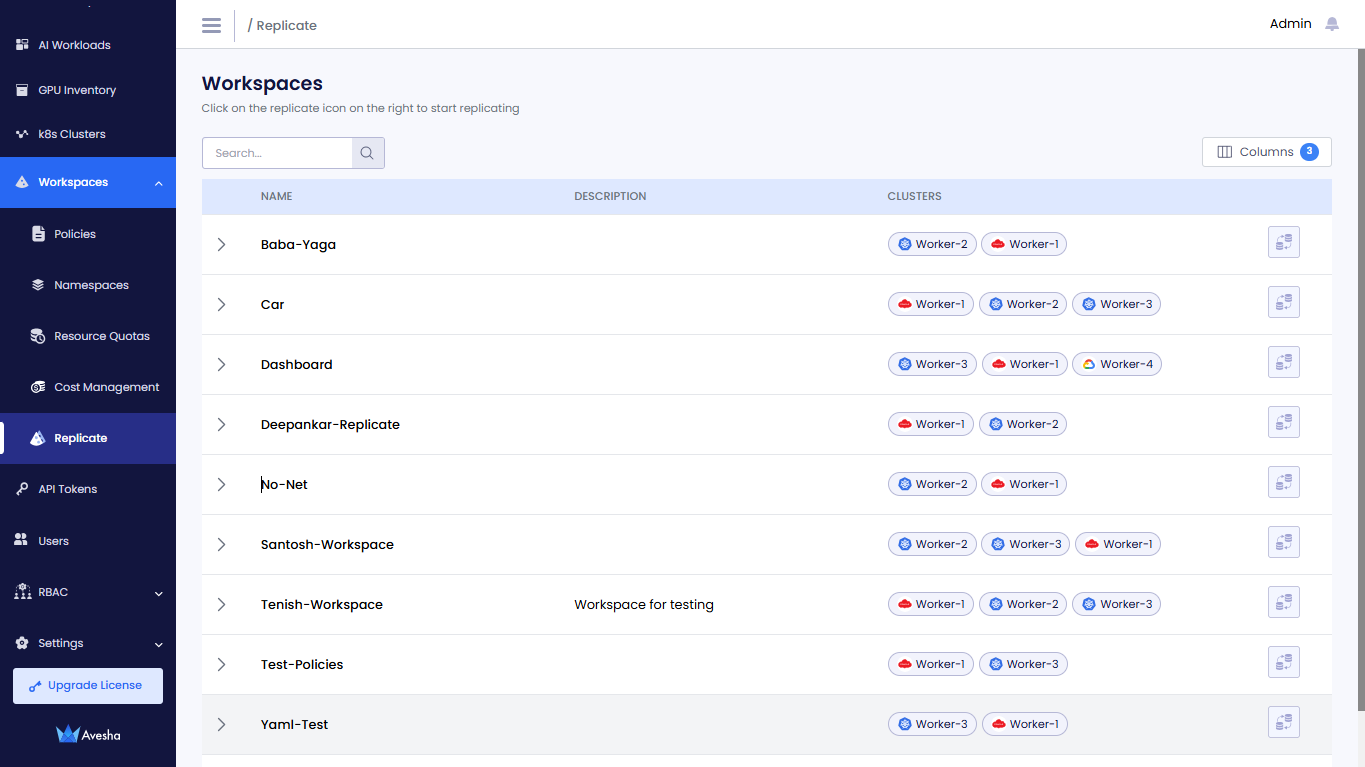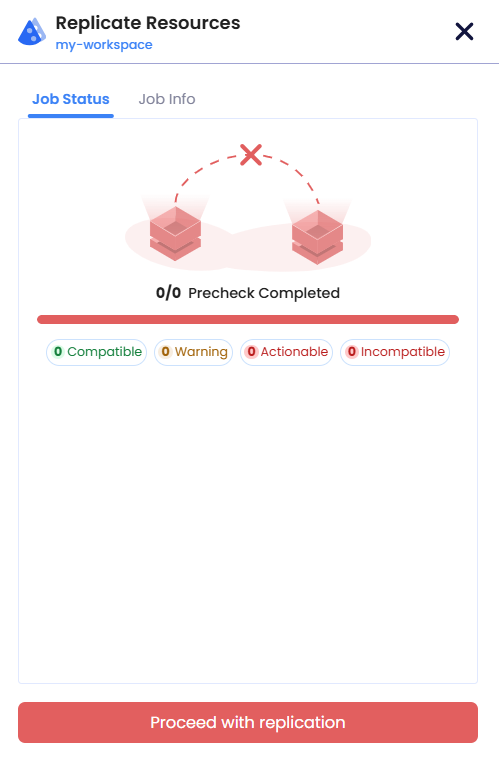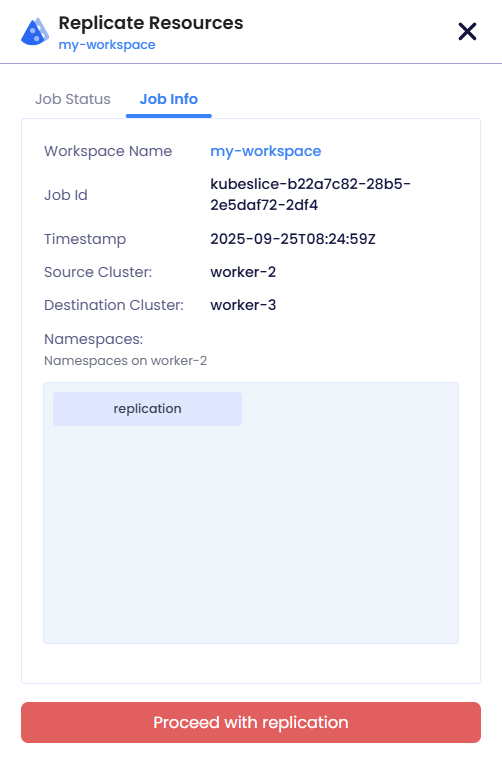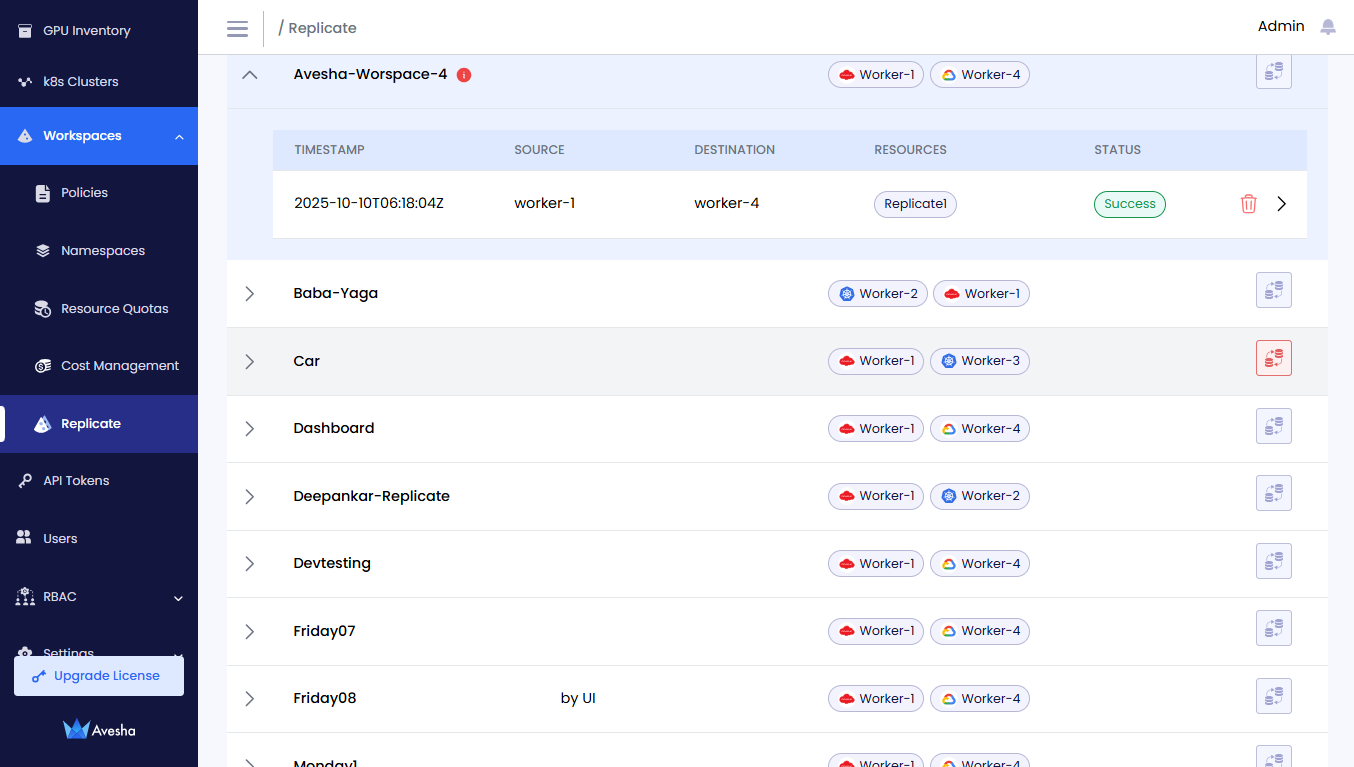Replicate Resources
This topic describes how to replicate resources from a source cluster to a destination cluster in a given workspace.
Overview
Replication is a feature that allows you to create a copy of an existing workspace, including its configurations, settings, and data. This is useful for creating test environments, backups, or migrating workspaces to different environments.
The Replication feature of EGS helps you to efficiently transfer applications or resources from one cluster to another, irrespective of the clusters' cloud or data center locations.
At a given time, a replication process can occur only from a source worker cluster to a destination worker cluster.
Prerequisites
Before you begin replicating a cluster on a workspace, ensure that the following prerequisites are met:
- The source and destination worker clusters must be registered with EGS.
- You must have the necessary permissions to replicate a cluster's resources in the given workspace.
- The namespaces you want to replicate must be in a ready state.
- MinIO must be installed on the controller cluster to facilitate the replication process.
Replicate a Workspace
To replicate resources from a source cluster to a destination cluster:
-
Expand Workspaces on the left sidebar.
-
Go to the Replicate submenu.
-
On the Replicate page, select the workspace that you want to replicate.

-
Click the replicate icon on the right of the workspace.

-
In the Replicate Resources dialog:
-
Select the source cluster from the Source Cluster drop-down list, from where you want to replicate the resources
-
Select namespaces from the source cluster that you want to replicate. You can select one or more namespaces.
-
Select the destination cluster from the Destination Cluster drop-down list, where you want to replicate the resources.
noteYou cannot select the same cluster as both the source and destination cluster.
-
Click the Replicate button.
Resource replication starts, and the Resource Replication Initiated message is displayed. Click OK to close the dialog.
-
Monitor the replication progress on the Replicate pane. You can view the status of the replication process, including any errors or warnings that may occur.
A pre-check is performed to ensure that the selected namespaces can be replicated to the destination cluster. If the pre-check fails, an error message is displayed indicating the reason for the failure.
The following figure shows the Pre-check status as Completed under Job Status.

You can view the details of the namespaces selected for replication under Job Info.

After the Pre-check for replication is completed, the Start Replication button is enabled. Click the Start Replication button to start the replication process.
-
Click Proceed with replication if you want to ignore the pre-check errors. When the replication completes close the pane.
-
On the Replicate page, under Workspaces, expand the workspace on which you performed replication to verify the replicated resources.
-
The different status of the replication job is as follows:
- In Progress: The replication process is currently ongoing.
- Success: The replication process has completed successfully.
- Error: The replication process has failed.
View Replication Status
To view the replication status:
-
Expand Workspaces on the left sidebar.
-
Go to the Replicate submenu.
-
On the Replicate page, select the workspace for which you want to view the replication status.
-
Expand the workspace to view the replication status.
You can view the details of the replication job, including the source and destination clusters, resources replicated, timestamp, and status of the replication job.

Delete a Replication
To delete a replication:
- Expand Workspaces on the left sidebar.
- Go to the Replicate submenu.
- On the Replicate page, select the workspace on which you want to delete replication.
- Click the delete icon on the right of the replication.
- You will be notified to confirm the deletion. Type DELETE and click the Delete Replication button.
Deleting a replication does not delete the workspace. It only deletes the replicated resources.